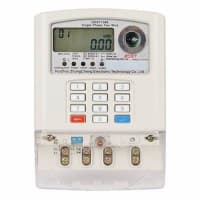Decorative Tile analyzes the US decorative tile market. It offers historical demand data (2005, 2010 and 2015) plus forecasts (2020 and 2025) by product, application and market. The study also considers key market environment factors, assesses the industry structure, analyzes company market share and profiles 33 US industry players including Florim Ceramiche, Crossville, Internacional de Ceramica, Shaw Industries and Mohawk.
Building construction expenditures to drive decorative tile demand
Growth in building construction expenditures will drive advances for US demand in decorative tile through 2020. The residential market is expected to post faster gains than the nonresidential market, bolstered by healthy increases in housing completions and continued interest in kitchen and bathroom renovation projects. In the nonresidential market, rebounding institutional building expenditures and growth in office and commercial building spending will drive decorative tile demand gains.
More decorative tiles made in US by 2020
According to Decorative Tile, a new study from The Freedonia Group, foreign trade plays a crucial role in the US decorative tile industry. The majority of decorative tiles can be made more cheaply abroad due to low cost labor structures and better access to raw materials, and as a result four-fifths of US tile demand in 2015 was imported. Through 2020, however, imports' share of the market is expected to fall as foreign producers expand their decorative tile manufacturing capacity in the US in order to fulfill domestic orders more quickly and to create products specifically tailored to the tastes of US consumers.
TPT growth to spur porcelain tile gains
Freedonia projects that porcelain tile will register the fastest growth in area demand terms through 2020. The rise in popularity of thin porcelain tile (TPT) will especially bolster demand. TPT's larger size and light weight, as well as performance attributes including resistance to scratches and cracking, make it a popular choice in both residential and commercial markets.
Ceramic tile will continue to account for the largest share by far. Ceramic floor tiles remain the most popular type of tile in both residential and nonresidential applications because of its affordability and low maintenance requirements. However, ceramic tile will continue to lose market share going forward to higher value alternatives such as Rustic porcelain tile and stone tile.
Flooring to remain dominant application
Flooring is the predominant application for decorative tile, and demand is expected to grow faster than any other application through 2020. In the residential market, gains will be boosted by consumer interest in tile flooring in kitchens, bathrooms, dining rooms, and foyers, both in new housing and in renovation projects. Decorative tile flooring also appeals to construction professionals and building managers in the nonresidential market because of its durability, low maintenance requirements, and slip resistance.

Building construction expenditures to drive decorative tile demand
Growth in building construction expenditures will drive advances for US demand in decorative tile through 2020. The residential market is expected to post faster gains than the nonresidential market, bolstered by healthy increases in housing completions and continued interest in kitchen and bathroom renovation projects. In the nonresidential market, rebounding institutional building expenditures and growth in office and commercial building spending will drive decorative tile demand gains.
More decorative tiles made in US by 2020
According to Decorative Tile, a new study from The Freedonia Group, foreign trade plays a crucial role in the US decorative tile industry. The majority of decorative tiles can be made more cheaply abroad due to low cost labor structures and better access to raw materials, and as a result four-fifths of US tile demand in 2015 was imported. Through 2020, however, imports' share of the market is expected to fall as foreign producers expand their decorative tile manufacturing capacity in the US in order to fulfill domestic orders more quickly and to create products specifically tailored to the tastes of US consumers.
TPT growth to spur porcelain tile gains
Freedonia projects that porcelain tile will register the fastest growth in area demand terms through 2020. The rise in popularity of thin porcelain tile (TPT) will especially bolster demand. TPT's larger size and light weight, as well as performance attributes including resistance to scratches and cracking, make it a popular choice in both residential and commercial markets.
Ceramic tile will continue to account for the largest share by far. Ceramic floor tiles remain the most popular type of tile in both residential and nonresidential applications because of its affordability and low maintenance requirements. However, ceramic tile will continue to lose market share going forward to higher value alternatives such as Rustic porcelain tile and stone tile.
Flooring to remain dominant application
Flooring is the predominant application for decorative tile, and demand is expected to grow faster than any other application through 2020. In the residential market, gains will be boosted by consumer interest in tile flooring in kitchens, bathrooms, dining rooms, and foyers, both in new housing and in renovation projects. Decorative tile flooring also appeals to construction professionals and building managers in the nonresidential market because of its durability, low maintenance requirements, and slip resistance.




















※コメント投稿者のブログIDはブログ作成者のみに通知されます